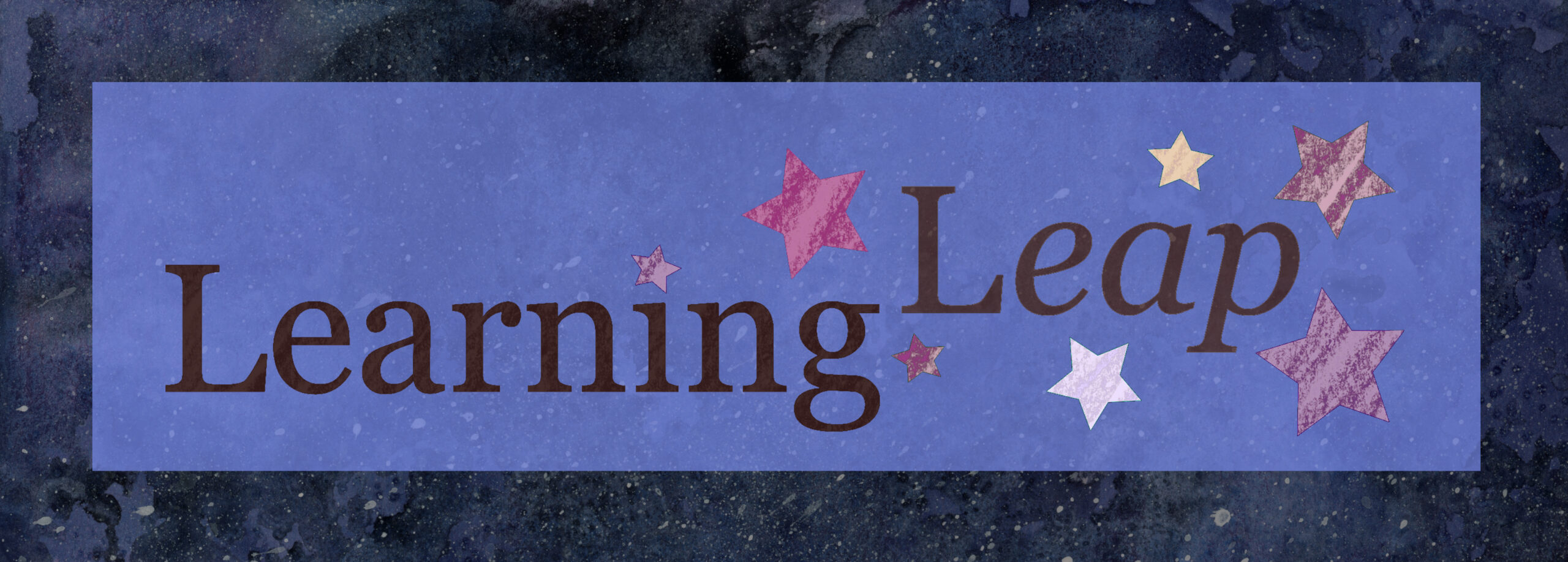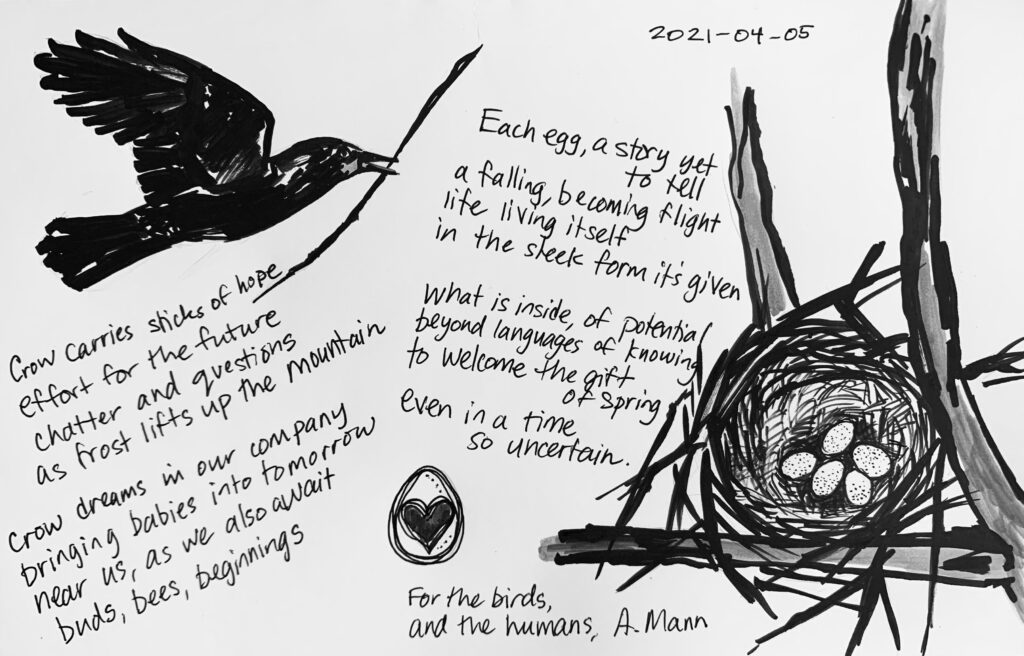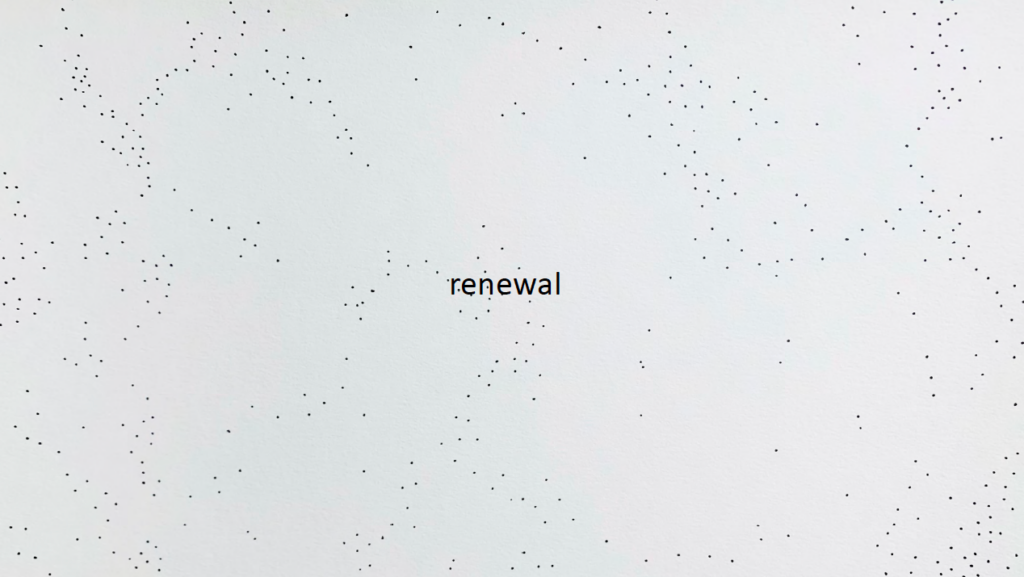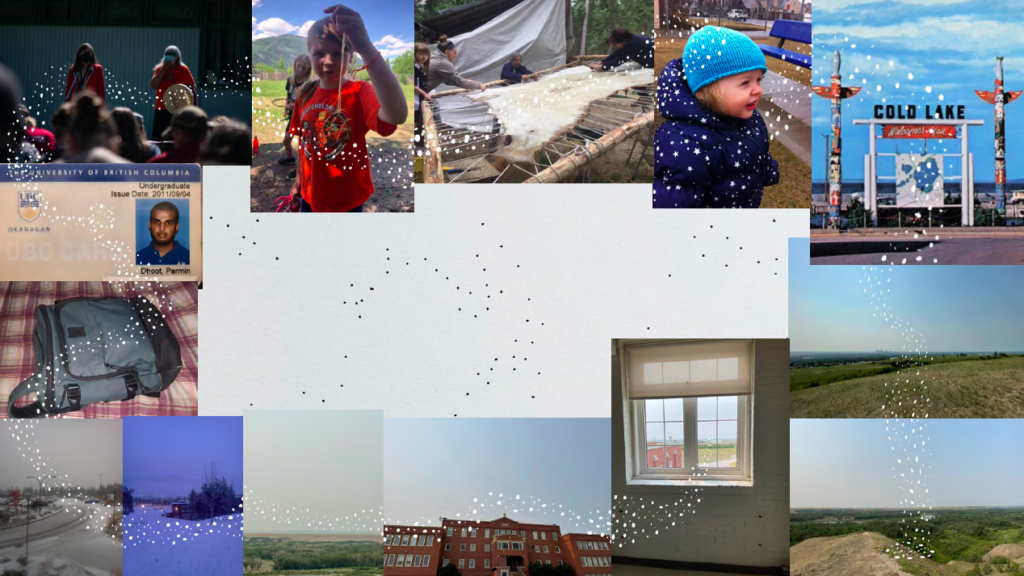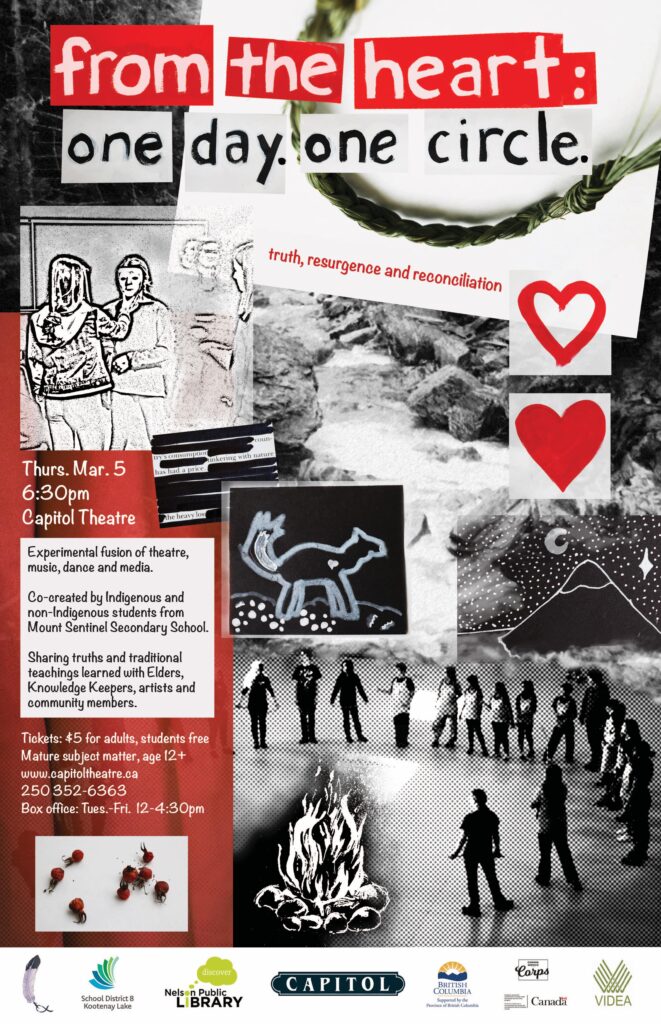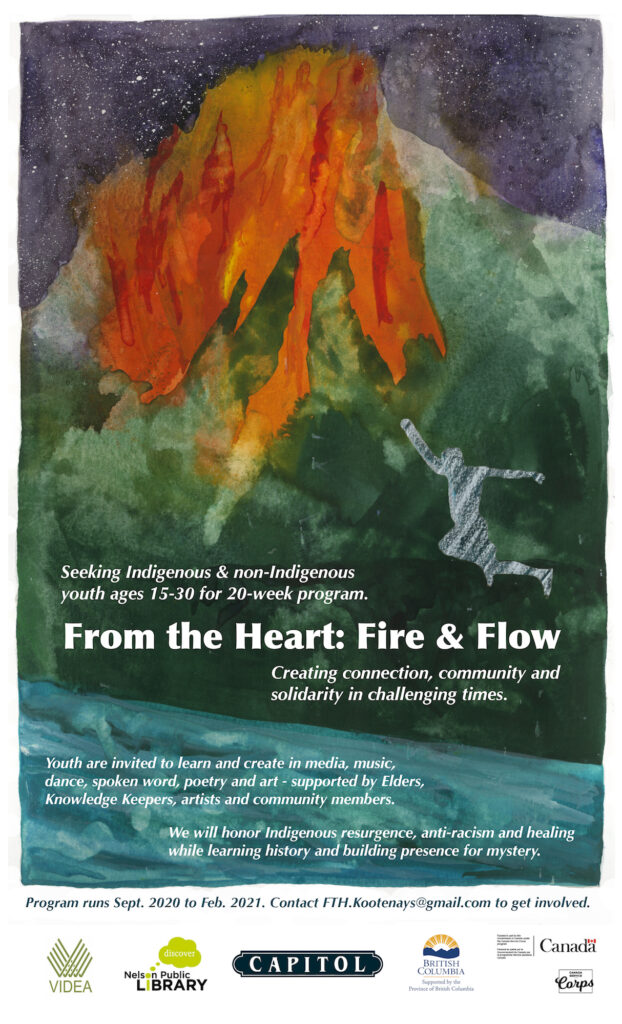…because creating is learning, and it is natural and good to contribute our unique spirit to the world.
The sections below present my most recent creative activities. There were many more before I became a teacher, and embarked upon my most creative act yet, the constant and lifelong commitment of parenting. I draw, paint, write, film, photograph, sing, tell stories and play guitar. I am always learning, and strive for excellence in all that I do, but seek and find joy in even my most preliminary of efforts. What do you create? What do you want to create next? How can we work together?
Learning in Indigenous Métissage
One of our final learning tasks for the summer courses was a collective creative experience in small groups, through the lens of Indigenous Métissage. Readings by Papaschase Cree scholar Dr. Dwayne Donald describing this approach brought us the theoretical context to embark upon a collaboration for a shared performance to close our final class. The impetus for this work is in such statements as the Dwayne Donald quote below.
‘If colonialism is indeed a shared condition, then decolonization needs to be a shared endeavour. I am convinced that decolonization in the Canadian context can only occur when Aboriginal people and Canadians face each other across historic divides, deconstruct their shared past, and engage critically with the realization that their present and future is similarly tied together.”
Dr. Dwayne Donald, “Forts, Curriculum, and Indigenous Métissage: Imagining Decolonization of Aboriginal-Canadian Relations in Educational Contexts,” in First Nations Perspectives 2, 1(2009): 1-24
We were in groups designed to cross the boundaries of Indigenous and non-Indigenous, so that we would be working within the aspirations of reconciliation, through our own particular relationships with decolonization. As I shared in my reflection essay following the collaboration experience, “This constellation of relationality gives opportunity for the “meaningful reconstruction” in theory that Donald identifies will support reconciliatory stories to “revitalize relationships with a common sense of place” (2012, p. 550). Our shared starting point is the guided practice of the course beforehand, as well as the immediately preceding learning of the residential school tour. These represent the generative seed of truth, and the good soil of common practice, allowing us to begin in a good way.”
Notably, the goal of Indigenous Métissage is not to arrive at a creative synthesis of ideas but to engage in “ethical relationality,” which Donald describes as a layering of images and understandings “that does not deny difference” (2009, p. 6). Our differences were present, and yet we also easily found commonalities and a meaningful approach to collaboration for our performance. After discovering connections through truth and justice, as well as a desire for hope, our starting place became the concept of renewal, brought to us by a long quote from Waubgeshig Rice’s novel Moon of the Crusted Snow put forward by group member Tanisha Wesley, Chiniki First Nation. The passage contemplates the idea of apocalypse as a recurring experience for Indigenous peoples within colonization, but also reinforces the fact of survival. Renewal brought us to awareness of cycles, and we then each brought personal stories in verse to accompany our images around the circle.
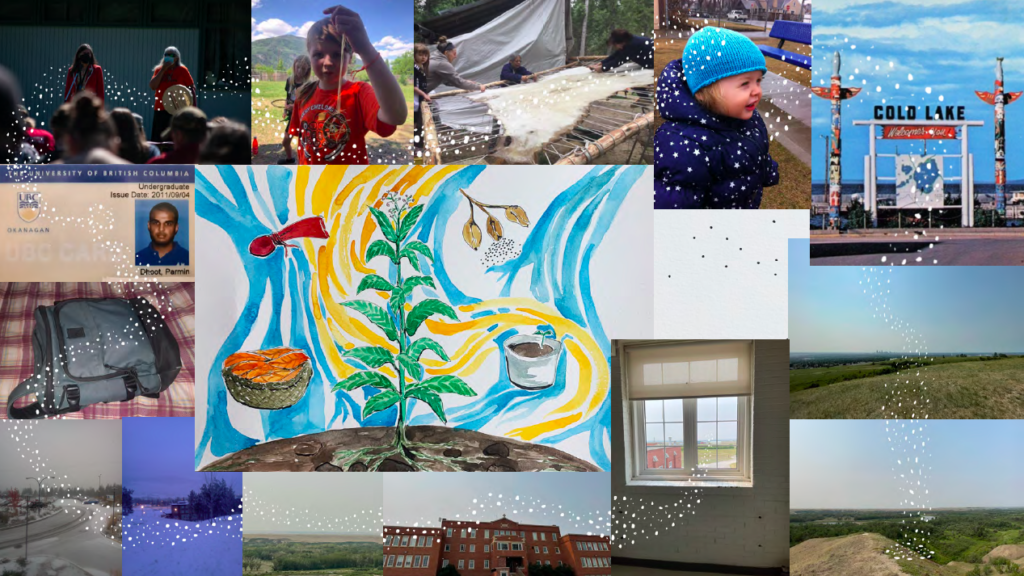
Following our performance, the task became breaking down the process to understand how it had enacted our learning in the whole course, and expressed our personal commitment to decolonization. For me, the tobacco seeds that connected our image offered the inspiring context to understand how this process had been different than previous creative experiences. It is, of course, the intentional pedagogy of the Call to Action program that has made the difference. The quotes below from my reflection paper give some idea of my conclusions, but the depth of learning will show itself as I enter into new project work later this month and into the fall.
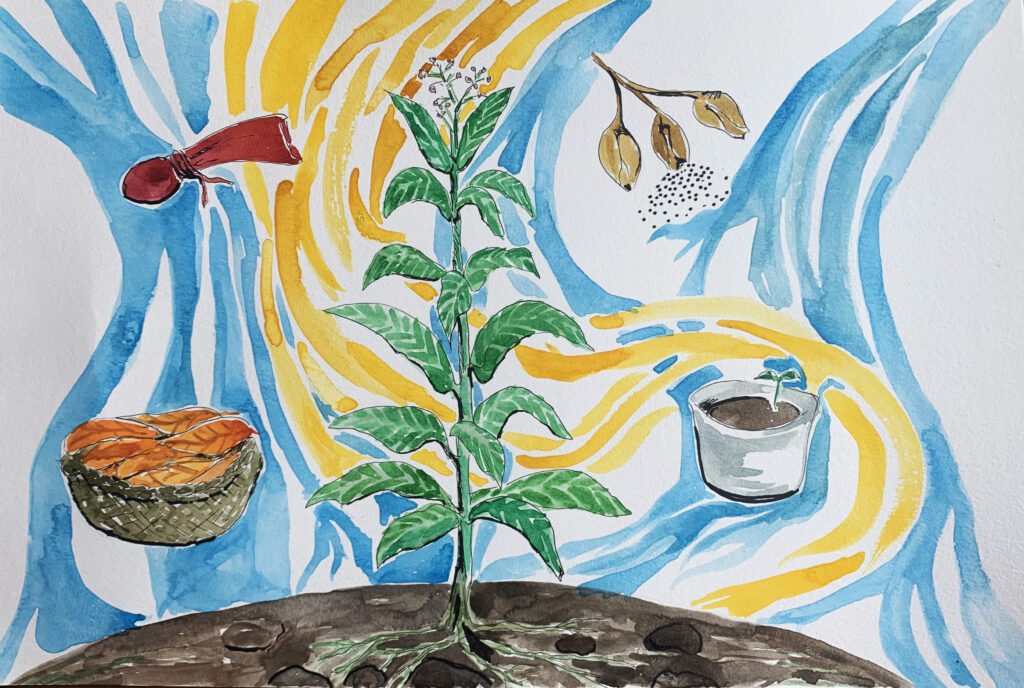
“Shared experiences of spirit in prayer and ceremony have connected us to the “sense of wonder and mystery” (Deloria, cited in Graveline, 1998, p. 39) that mainstream education largely dismisses. Receiving the living gift of tobacco to plant in the soil where we live connects us to the place-based intention of Indigenous Métissage, so that we are meeting in a way that honors “human affiliations with the land” (Donald, 2009, p. 14), not in utopian hybridity where historical truths may be denied (Donald, 2012, p. 541). As an inexperienced gardener, receiving the gift of tobacco seeds brings additional layers of learning. As first one, then two, then three more seeds sprout to green life, I experience a burst of hope, inspiration and self-worth, knowing that this program has gifted me new and sustained strength for my continued work in reconciliation.”
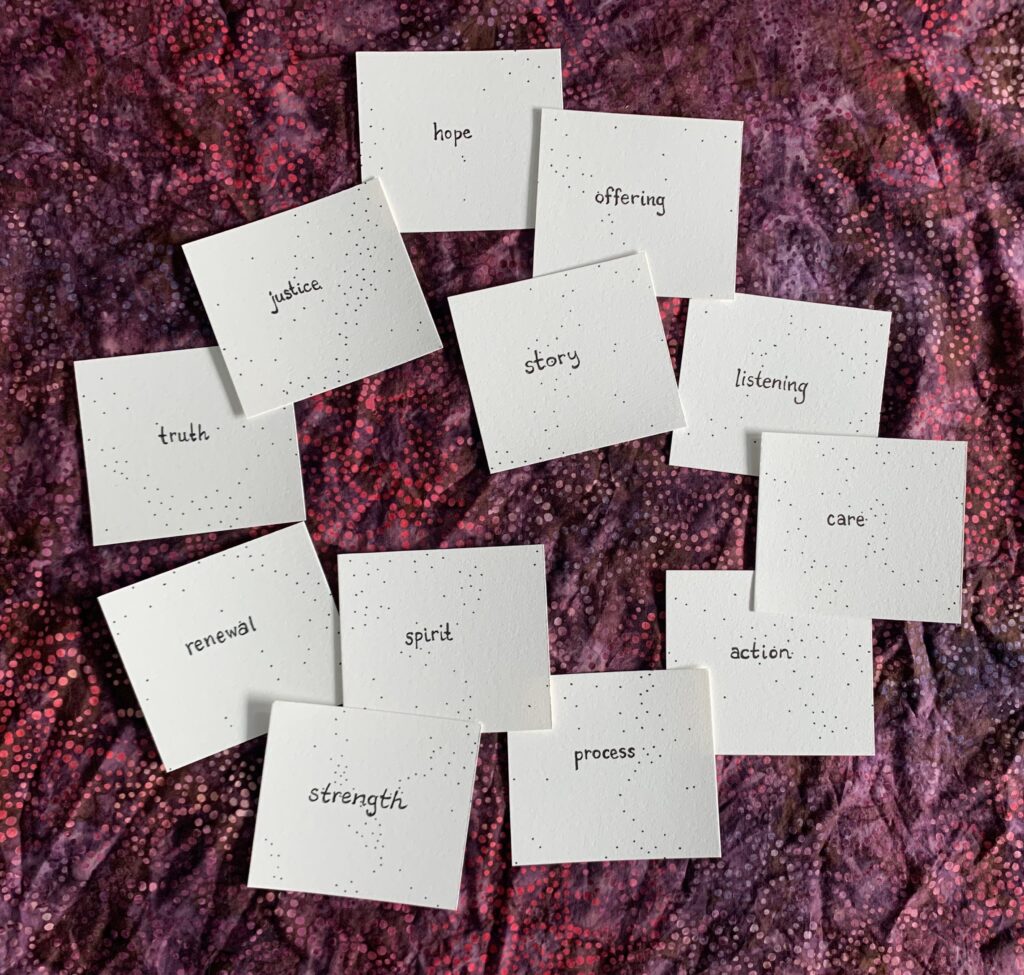
“Renewal is both the beginning and the end, as we will each carry this cycle forward in our work and lives. As I fulfill my responsibilities to parent, teach and lead, the growing tobacco plant and shoots on my windowsill are green, living reminders. They bring the strength of new conviction that moving forward is also a cycle of returning and kinship connections to others engaged in this work.“
Poetry as Edgewalking
Before our final Métissage learning task, we also had the opportunity to practice collaborative learning and creating through a shared reading exercise. Our assigned reading was called “Edgework: Indigenous Poetics as Re-placement” by Warren Cariou and it focused on Indigenous voices as strong teachers for building awareness about the truth of history and place, while bridging ideological boundaries in the abstract space poetry creates. The concept of “Edgewalking” it described was compelling to us, as the practice of exposing the colonial mindset and the boundaries that have allowed colonizers to ignore or deny inequity. We decided to write a collective poem as a way to share key insights in the article, and make it memorable for ourselves and the class. Below is the video response we presented, along with a commemorative photos of our zoom-based process. This was was joyful work that helped to prepare us for the more elaborate intentions of Métissage.
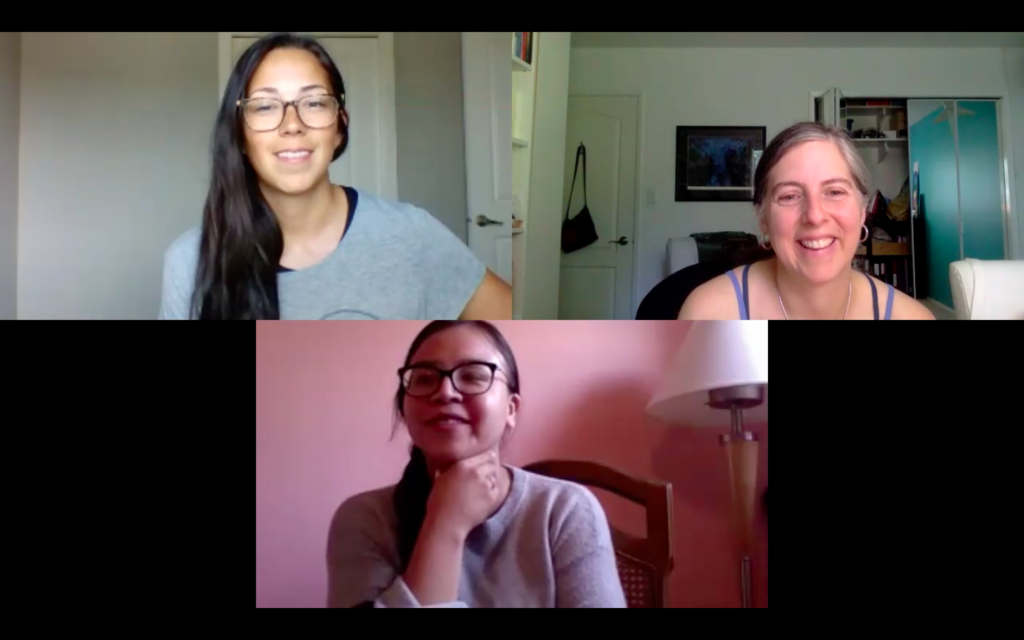
It is remarkable what we have all learned to achieve through remote platforms, but it is certainly true that our in-person circles were a welcome opportunity to get to know one another and build trust. Creativity as boundary crossing benefits from in-person interactions, even more so when these are supported and grounded by the land. Cariou spoke of his dream that “the boundaries of belonging and exile had fallen away.” It is powerful to share and build upon these dreams.
Just a month before the Call to Action program started, I produced a short video in response to a University of Calgary call for submissions on the topic of “What does reconciliation mean to me?” It was also poetry-focused, and although I didn’t yet know the term and concept of Edgewalking, it was an attempt to do this same kind of work.
Youth Creativity in Reconciliation
We are about to enter our third year of a project in the West Kootenay region of BC called “From the Heart,” an initiative funded by VIDEA (Victoria International Development Education Association), bringing together Indigenous and non-Indigenous youth ages 15-30 with the dual intention of creative expression and imagining a better future. For the last two years it has brought together groups of 20+ youth, supported by a network of Elders, Knowledge Keepers, artists and volunteer mentors. The themes and artistic directions are youth-driven and generative, building upon the interests and priorities of the group as it gathers. It is an honour and privilege to act as volunteer producer and teacher mentor for these complex projects, and contribute my creativity in whatever ways may be needed. The posters below show something of the visual presence of previous projects.
In 2019-20, From the Heart: One Day. One Circle. was completed by students at Mt. Sentinel Secondary School, and took final form as a multimedia theatre production with music and dance elements. The performers issued a powerful call to action that was well received by the audience and sparked momentum for community learning that continues today.
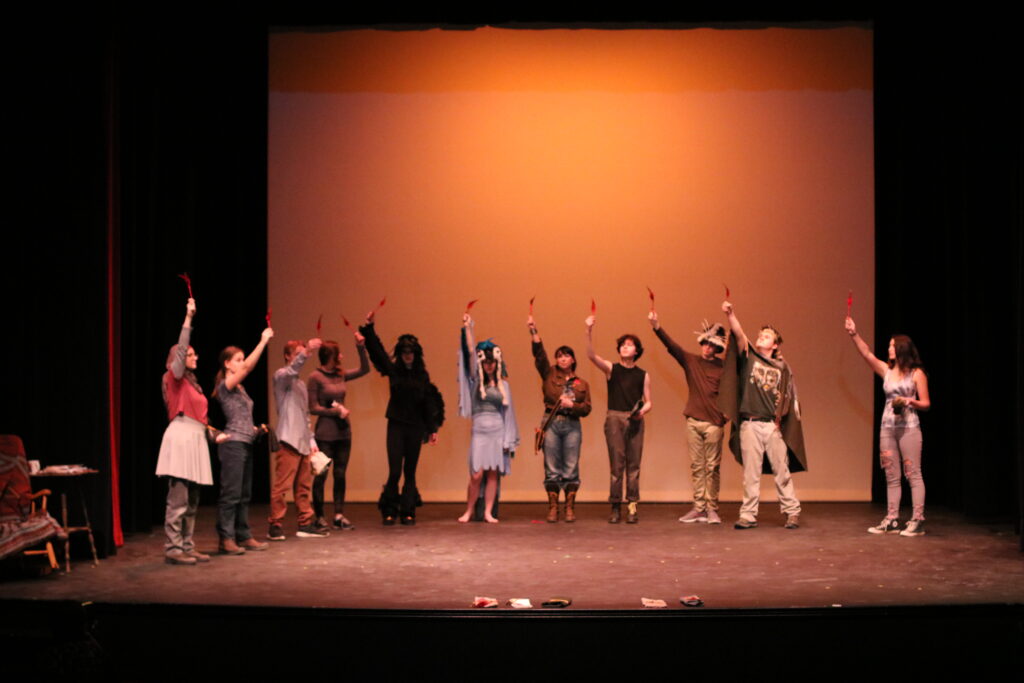
In 2020-21, From the Heart: Fire & Flow saw Mt. Sentinel students joined by several older community youth, as well as collaborative circles at Salmo Secondary School and J. L. Crowe Secondary School in Trail. Thematic connections to anti-racism, activism and Indigenous resurgence were rich and meaningful despite limitations imposed by the pandemic. The final product was a feature-length documentary (below), including student-made music, art, dance and storytelling, as well as a lengthy ‘zine publication with art, prose and poetry. Both the film and the ‘zine were widely shared and celebrated by community members.
What will the next cycle include? This question will be answered through dialogue and discovery, depending on who decides they are called to participate or contribute and what each person brings to the circle. The creative learning of the Call to Action program will offer many lessons and new inspiration for how to undertake our next steps together.
